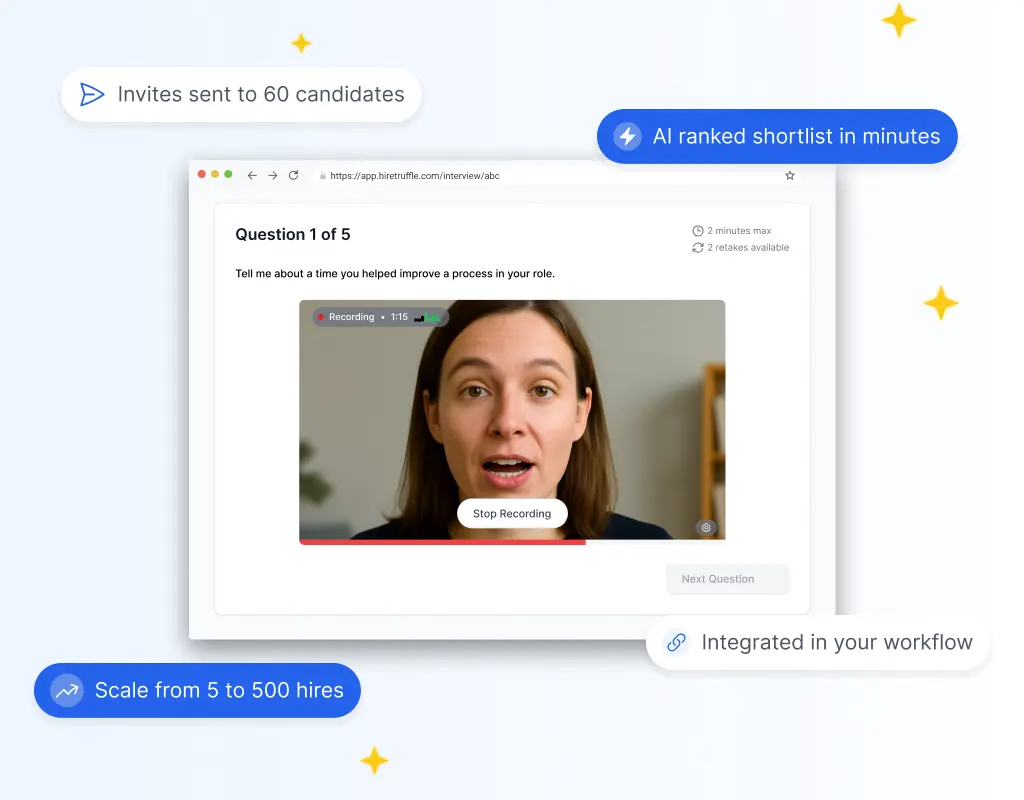The platform converts speech to text, compares the transcript with a competency library, and can extract non-verbal signals—pace, clarity, engagement, micro-expressions—into additional data points. Weighted models turn those signals into an overall match analysis visible in a recruiter dashboard.


